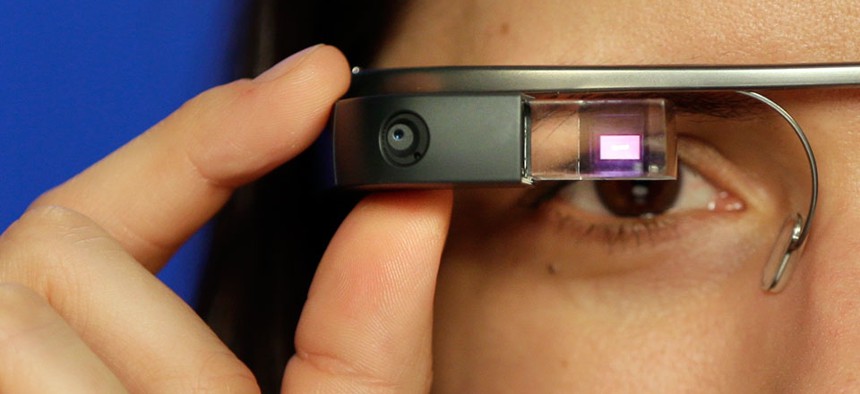We Need to Talk About the Health Risks of Wearable Technology

Seth Wenig/AP
The obvious problem is a lack of long-term research.
Fashion brands and technology companies are understandably breathless over the promise of wearable devices. The financial opportunity appears enormous—a tenfold market increase to $50 billion in three to five years, by some projections, and the upcoming release of the Apple Watch in 2015 has only fanned the flames of excitement.
This explained the energy earlier this month at a New York Times International Luxury Conference session on wearables, where panelists including the fashion designer Diane von Furstenberg; academic-turned-venture-capitalist John Maeda; fashion company Only the Brave CEO Stefano Rosso; and Babak Parviz, who led development of Google Glass (and now works for Amazon) discussed the possibilities.
I’ve listened to many of these conversations and to be honest, they’re beginning to feel repetitive: The technology is exciting; the market potential is huge; the devices are unattractive but the fashion industry can help with that. On this panel, von Furstenberg—one of fashion’s most visible ambassadors of wearable technology—brought up a point seldom, if ever, talked about in such forums.
Discussing the design evolution of Google Glass, which her company has made frames for, she said (19:40 in the video above): “At first Google Glass was this huge thing. And then it became smaller and smaller and smaller. And then it became a tiny little thing that you put on your head, and you just hope you don’t get a brain tumor.”
The comment got big laughs, but it was as if she had introduced an elephant many didn’t even know was in the room. “Sorry,” she added.
The panel moderator swiftly moved the conversation along, but a woman in the audience circled back to the idea during a question-and-answer period, (28:00 in the video) saying it was proven that holding cell phones close to one’s head causes changes in the brain’s glucose levels. (Earlier this year, Fitbit ran into a separate health issue, and had to recall one model of its fitness trackers when customers broke out in rashes from exposure to nickel and chemicals in the wristbands.)
Von Furstenberg put her hand to her brow, wearily. But the audience member had a valid point. For as much as we talk about wearable technology—Is it useful? Is it stylish? Is it affordable?—there’s a question we rarely raise: Is it safe?
The obvious problem is a lack of long-term research. We know devices such as cell phones emit radiofrequency (RF) radiation. (Parviz said his team at Google worked to ensure that devices such as Glass emitted levels of RF radiation “many magnitudes of order below” the threshold deemed safe by regulatory standards.) What we don’t really know is how RF waves will affect us in the long term. The radiation isn’t strong enough to change molecular structures, like x-rays are, but does create heat—that’s how microwaves cook food.
A recent study (pdf) conducted at the Örebro University Hospital in Sweden suggested Swedes who reported using wireless phones for more than 25 years were three times likelier than others to develop a potentially fatal brain tumor called a glioma. Other studies—the most significant of which Reuters reports was partially funded by cell phone companies—found no increase in risk of brain tumors (pdf) with mobile phone use.
Many agree the simplest cautionary measure is to maintain some physical distance from our radiation-emitting devices—but clearly that will be much more difficult when the device is strapped to one’s body.





